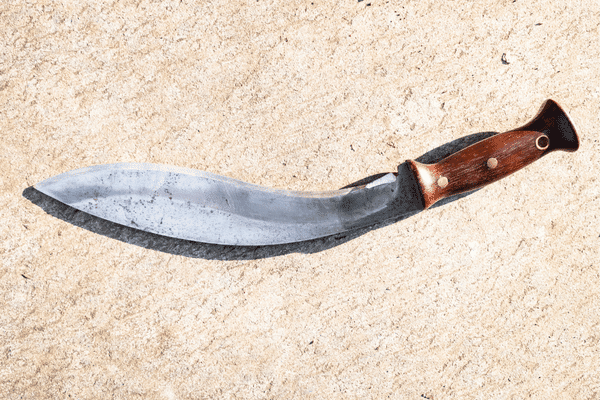Unraveling the Mystery: Why is it Called a Bastard Sword?
In the rich tapestry of medieval weaponry, the term "bastard sword" stands out with an air of intrigue. As we embark on this exploration, we delve into the historical roots and linguistic evolution that led to the christening of this versatile blade.
The Origins of the Term:
To understand why this weapon bears the moniker "Bastard sword," we must journey back to medieval times. The term itself does not denote any illegitimacy or scorn; rather, it reflects the sword's unique position between two distinct categories of medieval weaponry.
In the medieval hierarchy of swords, there were two primary classifications: the single-handed arming sword and the two-handed greatsword. The bastard sword, true to its name, found itself somewhere in the middle, blurring the lines between these two established categories.
A Sword of Ambiguity:
The bastard sword's defining characteristic is its size and versatility. Falling within the length range of 30 to 40 inches, it featured a blade that was longer than a typical arming sword but shorter than a greatsword. This put the weapon in a peculiar position, not conforming to the established norms of the time.
Adaptability on the Battlefield:
The versatility of the bastard sword was both a boon and a challenge. Wielders could seamlessly transition between one and two-handed use, allowing for a dynamic approach to combat. This adaptability made the swords a favorite among knights and warriors who valued the ability to adjust their fighting style based on the unfolding circumstances of battle.
The Language of Evolution:
As language often does, the term "bastard sword" evolved through colloquial usage. It wasn't a denouncement of the sword's legitimacy; rather, it was a pragmatic acknowledgment of its unique hybrid nature. Over time, the term became widely accepted to describe this intermediate class of swords, solidifying its place in the lexicon of medieval weaponry.
A Sword by Any Other Name:
Interestingly, the bastard sword is not the only weapon to bear a name that reflects its nonconformity. The term "bastard" in this context serves as a linguistic marker, indicating that this sword doesn't neatly fit into established categories. In a similar vein, the term "hand-and-a-half sword" is also used interchangeably, emphasizing the sword's ability to be wielded with either one or both hands.
Beyond the Battlefield:
While the bastard sword may have been a steadfast companion on the medieval battlefield, its influence extended beyond warfare. The sword became a symbol of a changing era, mirroring the evolving nature of combat and the societal shifts taking place during the late medieval period.
Influence on Pop Culture:
Centuries after its heyday, the bastard sword continues to captivate imaginations, finding a place in pop culture, literature, and fantasy realms. Iconic characters in literature and film, from knights to adventurers, often brandish bastard swords, cementing its status as a timeless and versatile weapon.
Conclusion:
In unraveling the mystery behind the name "bastard sword," we discover not a tale of illegitimacy but rather one of adaptability and evolution. The sword's unique position in the medieval hierarchy reflects the changing dynamics of warfare and the need for versatile weaponry. As we appreciate the craftsmanship and ingenuity behind this iconic blade, let us remember that, in the realm of swords, being a "bastard" doesn't diminish its worth but rather enhances its timeless appeal.





Comments
Post a Comment